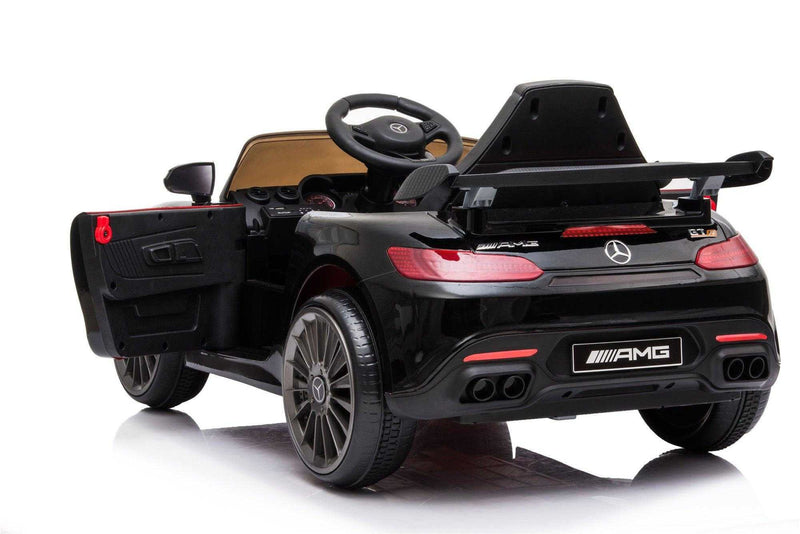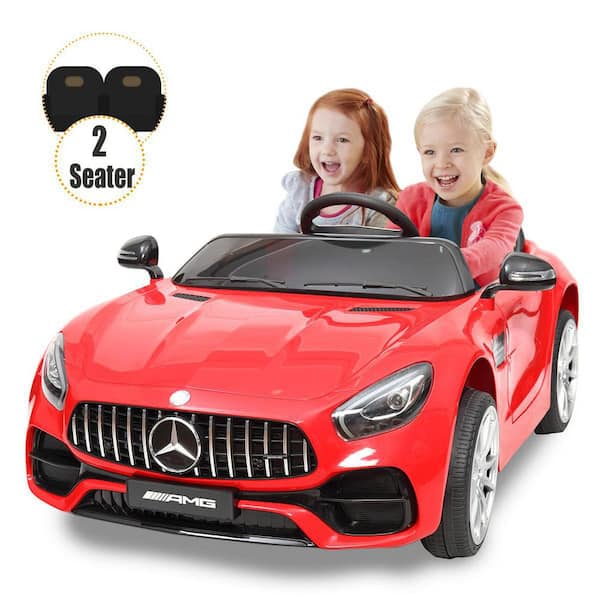Free News For Choosing Kids Ride On Cars
Wiki Article
What Ride-On Safety Features Should I Consider? Pros And Cons
Safety features are crucial to think about when selecting the best ride-on car for your child. This will ensure that your child is safe during playing time. Seat Belts and other safety elements are crucial.
Seat belts are a great way to keep your child secure when riding on the vehicle. This reduces the chances of them falling down or being ejected from the vehicle while playing. Seat belts are an extra layer of protection to your child when turning around and during abrupt stops.
Cons - Not all ride on cars come with seatbelts. This includes the ones specially designed for young children. Also, some children find seatbelts to be uncomfortably tight and uncomfortable. This can result in a resistance to using them.
Sturdy Construction
Pros – A ride-on with an extremely solid structure and top-quality materials is tough and durable and can provide security and dependability for a long time. It is made to be strong enough to withstand the strains of playtime while providing stability.
Cons - The price of a solid structure can be high, making them unaffordable to many families. Moreover, the heavier materials can impact the maneuverability and portability of the ride on vehicle.
Low Center of Gravity
Pros - Cars that have low centers of gravity have a lower chance to topple over and reduces the chance of injuries or accidents. They offer greater stability and better balance, especially in turning and maneuvers.
Pros - Ride-ons that have a low-center-of-gravity may sacrifice ground clearance for off-roading capabilities. This may restrict the range of riding.
Remote control for parents
Pros- Ride-on cars that can be controlled remotely permit parents to monitor and supervise their child while playing. This is an added layer of security and protection. Parents can intervene when an emergency occurs, navigate difficult terrain, or avoid collisions.
Cons – Parental remote control can hinder children's independence and autonomy, since they depend heavily on the supervision of their parents and help in playing. In addition, remote-controlled vehicles can cost more than manual ride-on cars.
Speed Limiters
Pros: Ride-ons with speed limits or adjustable settings for speed allow parents control the maximum speed of the vehicle to reduce collisions and accidents. They may increase the speed gradually as the child grows confident and acquires the skills.
Cons - Children can quickly grow out of their lower speed settings. This can lead to disappointment or frustration. Speed limiters are not always included on all models or may require additional features or additional accessories.
Safe Start Technology -
Safe start technology reduces the risk of lurches or sudden jerks, which can startle or destabilize a child. It makes riding more enjoyable and safe.
Cons - Some ride-on cars equipped with safety-start technology cost more than those that do not. A few children might also feel that the slow acceleration and deceleration is more boring and less thrilling as sudden stops and starts.
Visibility Enhancements
Pros - Ride-on vehicles equipped with visible enhancements such working headlights, reflective materials, or taillights improve the visibility of the vehicle. This is especially the case in dimly illuminated areas or conditions. These vehicles improve safety because they make the vehicle noticeable to pedestrians and vehicles.
Cons - The addition of visible features can increase battery drain or complexity in the design of the ride-on vehicle. These elements can cause problems or issues with maintenance.
If you take a look at these safety features, and weighing their pros and cons, you can choose an auto ride-on that will prioritize your child's safety and provides a fun and enjoyable play experience. Read the top rated ride on toys for more info including childs electric ride on car, toy the car, race car toy car, electric toy car, ride a toy, toy car for car, car on ride, toy toy cars, a toy car, toy cars toy car and more. .

How Are Models For Children's Cars Made For Outdoor And Indoor Use?
Indoors or out, kids car models are made to be used in different conditions and settings. Here are the differences between these models - Indoor Use Cars
Dimension and weight: Indoor cars are usually smaller and lighter to allow them to fit in small areas like bedrooms, living spaces, and hallways. They can maneuver through narrow spaces and tight passageways easily.
Low Ground Clarity - Indoor vehicles have low clearances that prevent them from getting stuck, or getting caught, on obstacles, such as carpets, rugs or thresholds. This enables the vehicle to glide smoothly and uninterrupted across indoor surfaces, with no chance of getting stuck or falling over.
Smooth Wheels. Indoor cars often feature wheels made of substances that have a smooth surface like plastic or rubber. They provide greater grip and traction when used on smooth surfaces such as hardwood floors, laminate flooring or tiles. They are specifically designed for indoor use to minimize noise and to keep surfaces safe from scratches.
Limited Speed - Cars used for indoor use usually have reduced maximum speeds in order to provide that they are safe and controlled in tight spaces. This helps prevent collisions and accidents with furniture such as walls or other obstacles that are found within.
Outdoor Use Cars -
Durable Construction- Cars that are built for outdoor use are built with durable materials. They can be constructed from tough plastic or metal to stand up to outdoor elements such as temperatures, sunlight, moisture changes, and rough handling. They are better able to withstand wear and tear due to exposure to outdoor conditions.
For outdoor use, cars that have a higher clearance of the ground can overcome obstacles and bumps in the outdoors. They are able to navigate rough surfaces like gravel, pavement or grass without getting damaged or stuck.
Traction Tires - The tires of vehicles designed for outdoor use often include treads to improve traction and grip on slick or uneven surfaces. This provides stability and control while driving on terrains that are outdoors and prevents sliding or skidding.
Weather Resistant: Cars designed for outdoor use often feature weather-resistant features such as sealed electronics or casings with waterproof coatings. They can also make use of the rust-resistant materials to avoid damage caused by moisture. This allows the car to endure rain, mud or puddles and still function well.
High Speed - Cars that are designed for outdoor use have greater speeds as they're designed to handle the open spaces and distances that can be encountered in the natural world. This allows children to experience a more thrilling and adventurous experience when out in the open.
With these design traits and other features, parents may choose a children's car that best fits their requirements for use and the surroundings that they intend to utilize it, whether indoors or out. They can then ensure your child's safety, fun, and lasting experience. Follow the recommended click here for Audi ride on car for website examples including kidscars, toy cars toy car, lambo toy car, toy car for car, a toy car, riding digger, riding digger, toy in car, childrens digger, childrens digger and more. .

What Are The Remote Control Kids' Cars? What Are The Benefits And Disadvantages?
Remote control cars for kids are also known as remote controlled cars or RCs. They are available in a range of designs, prices, and sizes to suit every budget and preference. This article provides an overview of types sizes, styles and prices of children's remote control cars, along with their advantages and disadvantages.
Electric RC Cars – Remote-controlled electric cars that are powered by batteries. They are suitable for use indoors as well as outdoors. They are available in a variety of styles, such as buggies, trucks, and sports cars.
Nitro RC Cars – Gas RC cars with faster speeds and better performance. However, they require more expertise and maintenance to run. They tend to be larger and cost more than electric RC vehicles.
Scale Models Remote-controlled replicas of real-life vehicles, including cars, trucks, aircrafts, and boats. Scale models vary between 1-10 and 1-24, with the larger scales offering more detail.
Sizes -
Remote controlled cars for children come in a variety of sizes. From miniature to full-scale replicas, they come in a variety of dimensions and shapes. The size of the car can influence the efficiency of a car, its speed, and its handling characteristics.
Micro-sized vehicles are compact and light. This makes them ideal for indoor use, especially with young children. Larger models provide more power and endurance, making them ideal for off-road racing in the outdoors and for outdoor driving.
Prices
Prices for remote-controlled children's vehicles depend on the factors that determine them, such as dimensions, features, and brands.
Micro-sized electric RC cars can be priced between $20 and $100 While larger-scale electric and nitro RC cars can range between $100 and $500 or more.
Scale models, top-quality hobby RCs may cost between several hundred dollars up to a whopping $1,000, depending on the quality of the model and performance.
Pros and Cons
Pros -
Children and adults can enjoy the fun and excitement of remote-controlled vehicles.
Skill Development Utilizing an RC vehicle aids in the development of spatial awareness, hand-eye coordination and problem-solving skills.
Social Interaction. You can take pleasure in RC vehicles with your family and friends, which promotes social interaction.
Customization - Many RC cars can be customized by utilizing aftermarket parts, upgrades and other accessories that can enhance performance and appearance.
Cons
Cost – High-quality models with advanced features, such as hobby-grade cars, can be quite expensive.
Children might find it difficult to operate the RC cars initially.
Maintenance: All RC vehicles require regular maintenance that includes cleaning regularly, oiling, and fixing or replacing parts.
Safety Issues - RC car safety could be impacted due to electrical hazards, collisions as well as other risks if the cars are not operated with care and supervision from an adult.
In general, remote-control children's vehicles are an exciting and learning experience for kids of all ages. However, when choosing the best model for your child consider things like cost size, dimensions, features and security. The hobby-grade RC models are suited to older children or people who enjoy. The simpler models are ideal for younger kids and beginners. Have a look at the most popular Audi ride on car kidscars.co.uk news for website advice including remote control childrens car, electric ride on cars, pedal car, toy in car, ride of car, two seater electric cars, lambo toy car, car on ride, toy with car, two seater childrens electric cars and more. .
